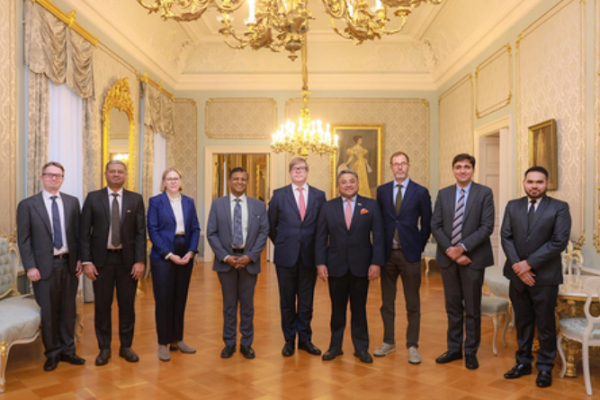
Every year on November 11, people around the world celebrate World Origami Day. This day serves as a tribute to the centuries-old Japanese art of paper folding that transforms a simple sheet into a masterpiece. Origami is not just an art form, it's a language of patience, precision, and creativity.
As the world folds paper cranes, flowers, and stars to mark this day, here are six fascinating facts about origami that reveal its cultural, scientific, and emotional depth.
1. Origami Dates Back To Ancient Japan

Though often seen as a modern craft, origami's roots stretch back to the 6th century in Japan, when paper was a luxury reserved for the elite. The art with used for religious rituals and ceremonial purposes. These delicate folds symbolise purity and harmony. Over time, origami evolved beyond spiritual boundaries, becoming a form of artistic expression and education. With the spread of paper-making techniques across Asia and Europe, origami’s influence expanded, giving rise to variations like Chinese “zhezhi” and European “papier plié,” proving that creativity knows no borders.
2. The Word ‘Origami’ Has A Deeper Meaning

The term "Origami" comes from two Japanese words, ori (to fold) and kami (paper). Kami also means "god" or "spirit" in Japanese. In traditional Japanese belief, folding paper is seen as an act of respect and mindfulness, aligning the creator’s focus and energy with the material. The transformation of a flat sheet into a living form symbolises the power of intention and transformation. So, every crane, flower, or dragon you fold isn’t just art, it’s a reflection of your inner calm and discipline.
3. The Peace Crane Became A Global Symbol Of Hope

The paper crane or orizuru is one of the most recognised creation worldwide. Its global significance grew after World War II, largely due to the touching story of Sadako Sasaki. She was a young Japanese girl who developed leukemia after the Hiroshima bombing. Sadako began folding a thousand paper cranes, inspired by a legend that promised a wish to anyone who completed the task. Though she passed away before finishing, her cranes became an enduring symbol of peace, hope, and resilience. Today, thousands of cranes are sent to the Children’s Peace Monument in Hiroshima every year, proving that the smallest folds can carry the deepest messages.
4. Origami Is Now Used In Science And Technology

Origami is not confined to art rooms. It's shaping the future of engineering, architecture, and space technology. Scientists and designers have studied origami folding patterns to create foldable solar panels, airbags, stents, and even satellite structures. NASA, uses origami-inspired techniques to design compact equipped that can unfold in space. Similarly, medical researchers have developed origami stents that can expand safely inside the body. These innovations show how an ancient art form has evolved into a modern science of precision and efficiency, blending creativity with innovation.
5. The Mathematics Of Folding Is Surprisingly Complex

Behind the graceful folds of origami lies a world of geometry, symmetry, and mathematics. Mathematicians study origami to understand how flat materials can transform into complex three-dimensional structures. The art form has given rise to an entire branch of math called “origami mathematics”, which explores concepts like crease patterns, folding angles, and flat-foldability. This has applications in robotics, material science, and computational design. For students, origami is also a fun and interactive way to learn spatial reasoning, geometry, and problem-solving.
6. It’s Also Used As Therapy And Meditation

Beyond beauty and science, origami is a form of mindful therapy. Psychologists and educators use it to help people manage stress, improve focus, and express emotions. Folding paper requires patience and presence, making it a form of moving meditation. For children, it enhances motor skills and creativity; for adults, it provides calm and clarity. Many wellness programs around the world now include origami therapy, blending ancient artistry with modern psychology.
-
Akeal Hosein set to join West Indies for remaining ODIs against Bangladesh

-
Quan Thang House: 300-year-old witness to Hoi An’s floods

-
VC Jennifer Neundorfer explains how founders can stand out in a crowded AI market

-
Affordable Audio with Premium Features

-
India and Finland agree to strengthen trade, digital and AI cooperation Gujarati
